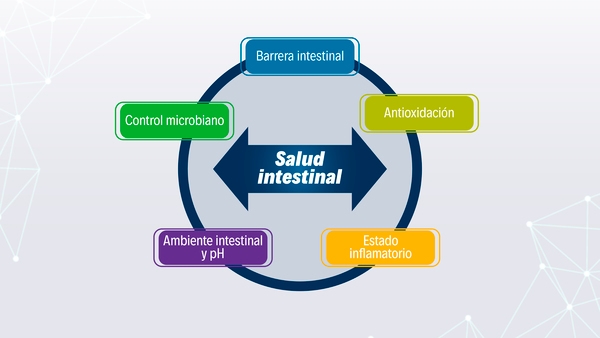
Aceite esencial de Lippia origanoides, la protección integral contra los riesgos en la producción


1. Bakkali, F., Averbeck, S., Averbeck, D., & Idaomar, M. (2008). Biological effects of essential oils--a review..Food and chemical toxicology: an international journal published for the British Industrial BiologicalResearch Association, 46 2, 446-75 . https://doi.org/10.1016/J.FCT.2007.09.106.
2. Burt, S. A., van der Zee, R., Koets, A. P., de Graaff, A. M., van Knapen, F., Gaastra, W., ... & Veldhuizen, E. J.(2007). Carvacrol induces heat shock protein 60 and inhibits synthesis of flagellin in Escherichia coli O157:H7. Applied and environmental microbiology, 73(14), 4484-4490.
3. Coles, M., Forga, A., Señas-Cuesta, R., Graham, B., Selby, C., Uribe, Á., Martínez, B., Angel-Isaza, J., Vuong,C., Hernández-Velasco, X., Hargis, B., & Téllez-Isaías, G. (2021). Assessment of Lippia origanoides EssentialOils in a Salmonella typhimurium, Eimeria maxima, and Clostridium perfringens Challenge Model toInduce Necrotic Enteritis in Broiler Chickens. Animals : an Open Access Journal from MDPI, 11.https://doi.org/10.3390/ani11041111.
4. Díaz Carrasco, JM; Casanova, NA; Fernández Miyakawa, ME Microbiota, salud intestinal y productividaddel pollo: ¿cuál es la conexión? Microorganismos 2019 , 7 , 374.https://doi.org/10.3390/microorganisms7100374
5. Diéguez, S., Decundo, J., Martínez, G., Amanto, F., Bianchi, C., Gaudio, D., & Soraci, A. (2021). Effect ofDietary Oregano (Lippia origanoides) and Clover (Eugenia caryophillata) Essential Oils' Formulations onIntestinal Health and Performance of Pigs.. Planta medica. https://doi.org/10.1055/a-1698-8469.
6. Duarte, M., Duarte, R., Rodrigues, R., & Rodrigues, M. (2017). Essential Oils and Their Characteristics. , 1-19. https://doi.org/10.1002/9781119149392.CH17.
7. Penalver, P., Huerta, B., Borge, C., Astorga, R., Romero, R., & Perea, A. (2005). Antimicrobial activity of fiveessential oils against origin strains of the Enterobacteriaceae family. Apmis, 113(1), 1-6.8.
8. Sergeant, M. J., Constantinidou, C., Cogan, T. A., Bedford, M. R., Penn, C. W., & Pallen, M. J. (2014).Extensive microbial and functional diversity within the chicken cecal microbiome. PloS one, 9(3), e91941.
9. Ultee, A., Bennik, M. H. J., & Moezelaar, R. J. A. E. M. (2002). The phenolic hydroxyl group of carvacrol isessential for action against the food-borne pathogen Bacillus cereus. Applied and environmentalmicrobiology, 68(4), 1561-1568.







